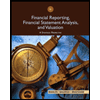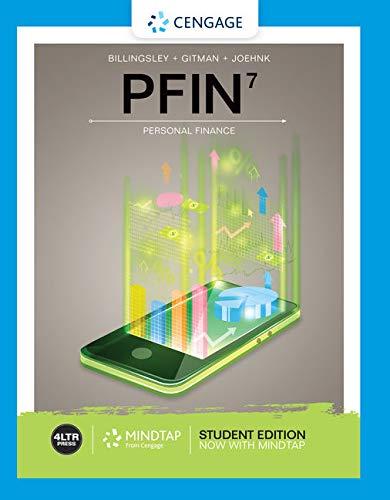
Trading Investments:
Trading investments are the investments in debt or equity securities where the investor holds less than 20% of the voting stock. The investor wishes to sell these investments at a short notice like in a few days, week, or months to generate some profit out of it. They are treated as current assets.
To identify: How the given investment would be classified.
Answer to Problem 1QC
When the investor invests in the debt or equity securities, holding less than 20% of the voting stock of the investee company, in view of selling them in the near future, then such investment is known as a trading investment.
Hence, the correct answer is option b. Trading investment.
Explanation of Solution
Justification for incorrect answers:
Option a. Significant interest investments are the equity securities where an investor holds more than 20%, but less than 50% of the voting stocks. Here, Railway I (investor) will own only 5% of the voting stock of Company P. Hence, option a. is incorrect answer.
Option b. Trading investments are short-term securities where the investor owns less than 20% of the voting stock of the investee company which are bought to sell in the near future to generate profits.
The investment made by Railway I is a trading investment as it represents 5% of voting stocks and investment was made for 3 months.
Option c. Held-to-maturity investment is the investment which is held till their maturity date. Here, Railways I is not planning to hold the investment till maturity, but is planning to hold them for only three months. Hence, option c. is an incorrect answer.
Option d. Controlling interest investments are the equity securities where an investor holds more than 50% of the voting stocks. Here, Railway I will hold only 5% of the voting stock of the investee company. Hence, option d, is an incorrect answer.
Justification for correct answer:
Option b. As the investor company (Railway I) is considering investing in the investee company (Company P) for a short period (three months), and the investment will represent less than 20% of the voting stock (5%) of the investee company, then such investment would be classified as a trading investment.
Hence, option b. is the correct answer.
Want to see more full solutions like this?
Chapter 10 Solutions
EP HORNGREN'S FINAN.+MGRL.ACCT.-ACCESS
- Torre Corporation incurred the following transactions. 1. Purchased raw materials on account $46,300. 2. Raw Materials of $36,000 were requisitioned to the factory. An analysis of the materials requisition slips indicated that $6,800 was classified as indirect materials. 3. Factory labor costs incurred were $55,900, of which $51,000 pertained to factory wages payable and $4,900 pertained to employer payroll taxes payable. 4. Time tickets indicated that $50,000 was direct labor and $5,900 was indirect labor. 5. Overhead costs incurred on account were $80,500. 6. Manufacturing overhead was applied at the rate of 150% of direct labor cost. 7. Goods costing $88,000 were completed and transferred to finished goods. 8. Finished goods costing $75,000 to manufacture were sold on account for $103,000. Instructions Journalize the transactions.arrow_forwardChapter 15 Assignment of direct materials, direct labor and manufacturing overhead Stine Company uses a job order cost system. During May, a summary of source documents reveals the following. Job Number Materials Requisition Slips Labor Time Tickets 429 430 $2,500 3,500 $1,900 3,000 431 4,400 $10,400 7,600 $12,500 General use 800 1,200 $11,200 $13,700 Stine Company applies manufacturing overhead to jobs at an overhead rate of 60% of direct labor cost. Instructions Prepare summary journal entries to record (i) the requisition slips, (ii) the time tickets, (iii) the assignment of manufacturing overhead to jobs,arrow_forwardSolve accarrow_forward
- Solve fastarrow_forwardAssume that none of the fixed overhead can be avoided. However, if the robots are purchased from Tienh Inc., Crane can use the released productive resources to generate additional income of $375,000. (Enter negative amounts using either a negative sign preceding the number e.g. -45 or parentheses e.g. (45).) Direct materials Direct labor Variable overhead 1A Fixed overhead Opportunity cost Purchase price Totals Make A Buy $ SA Net Income Increase (Decrease) $ Based on the above assumptions, indicate whether the offer should be accepted or rejected? The offerarrow_forwardThe following is a list of balances relating to Phiri Properties Ltd during 2024. The company maintains a memorandum debtors and creditors ledger in which the individual account of customers and suppliers are maintained. These were as follows: Debit balance in debtors account 01/01/2024 66,300 Credit balance in creditors account 01/01/2024 50,600 Sunday credit balance on debtors ledger Goods purchased on credit 724 257,919 Goods sold on credit Cash received from debtors Cash paid to suppliers Discount received Discount allowed Cash purchases Cash sales Bad Debts written off Interest on overdue account of customers 323,614 299,149 210,522 2,663 2,930 3,627 5,922 3,651 277 Returns outwards 2,926 Return inwards 2,805 Accounts settled by contra between debtors and creditors ledgers 1,106 Credit balances in debtors ledgers 31/12/2024. 815 Debit balances in creditors ledger 31/12/2024.698 Required: Prepare the debtors control account as at 31/12/2024. Prepare the creditors control account…arrow_forward
 Financial Reporting, Financial Statement Analysis...FinanceISBN:9781285190907Author:James M. Wahlen, Stephen P. Baginski, Mark BradshawPublisher:Cengage Learning
Financial Reporting, Financial Statement Analysis...FinanceISBN:9781285190907Author:James M. Wahlen, Stephen P. Baginski, Mark BradshawPublisher:Cengage Learning Pfin (with Mindtap, 1 Term Printed Access Card) (...FinanceISBN:9780357033609Author:Randall Billingsley, Lawrence J. Gitman, Michael D. JoehnkPublisher:Cengage Learning
Pfin (with Mindtap, 1 Term Printed Access Card) (...FinanceISBN:9780357033609Author:Randall Billingsley, Lawrence J. Gitman, Michael D. JoehnkPublisher:Cengage Learning EBK CONTEMPORARY FINANCIAL MANAGEMENTFinanceISBN:9781337514835Author:MOYERPublisher:CENGAGE LEARNING - CONSIGNMENTCentury 21 Accounting Multicolumn JournalAccountingISBN:9781337679503Author:GilbertsonPublisher:Cengage
EBK CONTEMPORARY FINANCIAL MANAGEMENTFinanceISBN:9781337514835Author:MOYERPublisher:CENGAGE LEARNING - CONSIGNMENTCentury 21 Accounting Multicolumn JournalAccountingISBN:9781337679503Author:GilbertsonPublisher:Cengage




